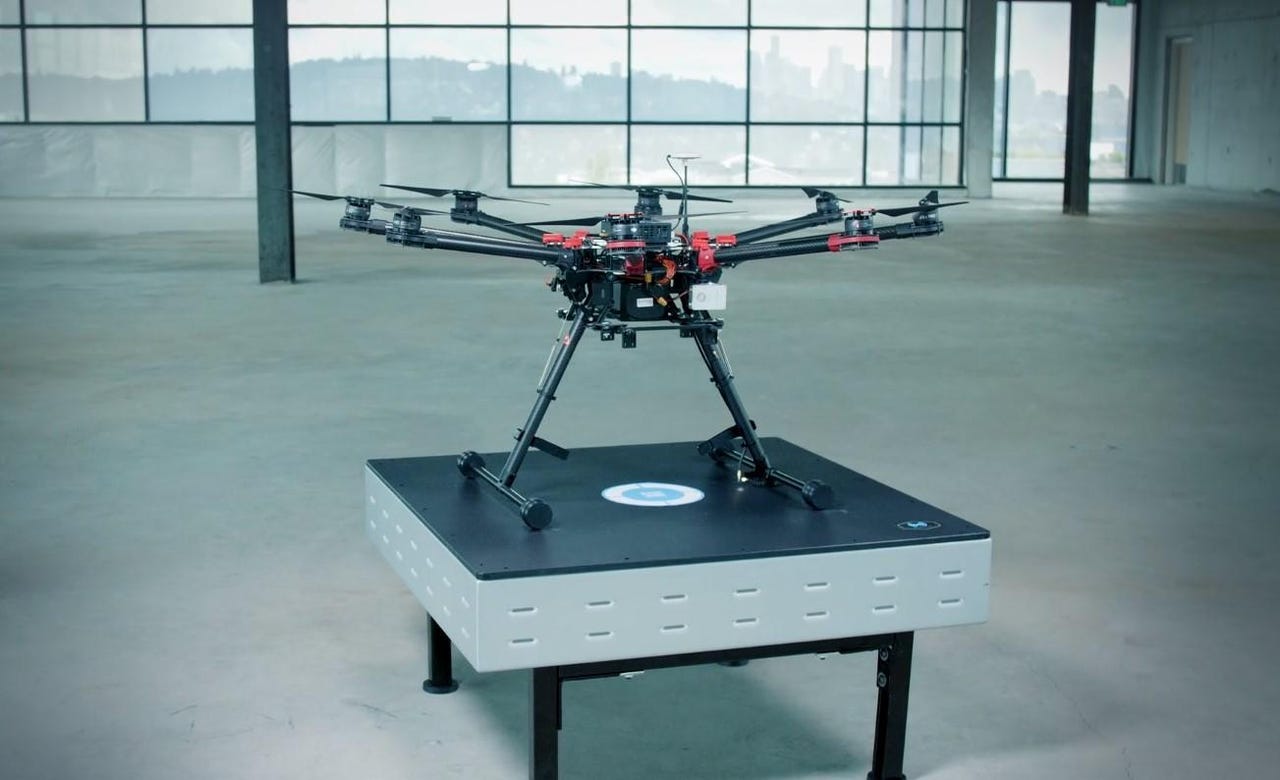How wireless charging could unlock commercial drone potential


Commercial drones are still at the starting line in the U.S., but as the FAA begins loosening regulations the sector is primed to take off. Wireless charging, which is helping robots of all stripes operate independently and with less downtime could have a number of benefits for drones as well.
"This year marks an inflection point for robot adoption, from mobile robots to aerial drones, even extending to underwater and space-based robots," says Ben Waters, CEO and co-founder of WiBotic, which makes wireless charging solutions for the automation sector. "Organizations that have evaluated small numbers of robots in the past are now realizing ROI, and are pivoting to scale-up."
WiBotic, which we've been tracking closely, made headlines late last year for an ambitious project to bring its wireless charging technology to the moon. The company's focus on industrial wireless charging has caught on among automation developers in spaces like robots and drones. Last year the company was granted equipment authorization for high power transmitters and receivers from the FCC. The transmitters provide up to 300 watts of wireless power via inductive charging, the first time the FCC had granted approval of this sort of technology for use in mobile robots and other devices with larger batteries.
As another federal agency, the FAA, begins to lift the embargo on commercial drone operations over people, the table is set for a dovetailing of enterprise drones and wireless charging. One reasons is that wireless charging could extend drone range. Drones can only typically fly for 30 min or less on a single battery charge, meaning routine inspections over long distances (such as for power lines) require multiple stops along the way for drones to recharge their batteries. Those charging stations could be basic landing pads or they could be fully protective drone hangars, such as the Drone Matrix YACOB. Wireless charging drastically simplifies the landing process by making it unnecessary for the drone to dock precisely with a charging station.
Further, when dealing with distributed fleets of enterprise drones, such as delivery or inspection drones, it would be important to have visibility into the charging process to make sure each drone is fully charged at the correct voltage. LiPo drone batteries are finicky and need to be charged correctly, which means having control over charge voltage and speed. Downtime is also costly in an operation that relies on carefully coordinated logistics, and optimizing charging times and speeds based on operational needs would be advantageous.
None of that is directly related to wireless charging, except that in its application in robotics wireless charging solutions are ideally deployed across fleets. WiBotic's recently released Commander system also offers the ability to potentially increase flight and battery safety via programmable and coordinated chargers.
"Commander was created to address these efforts by providing our customers with unparalleled insight into how their robots consume energy," says Waters, "how to minimize robot downtime and predict failures before they happen; even how to evaluate and compare performance across different battery types and vendors."
The Commander software allows users to configure those settings remotely and to customize settings for different drones. With the advanced features, charging can also be controlled to extend battery lifespan. For instance, it negatively impacts lithium batteries to be charged at the maximum speed every time. Commander can be used to slow down the charge speed when another flight is not immediately needed, or speed it back up when it is. These types of practices can double the lifespan of a drone battery, but a software console is needed in order to implement them.
It's early days yet, but as the commercial drone sector matures we're seeing convergence technologies long confined to development coming online in the enterprise. The future of commercial drone flight for many fleet applications may well be wireless.